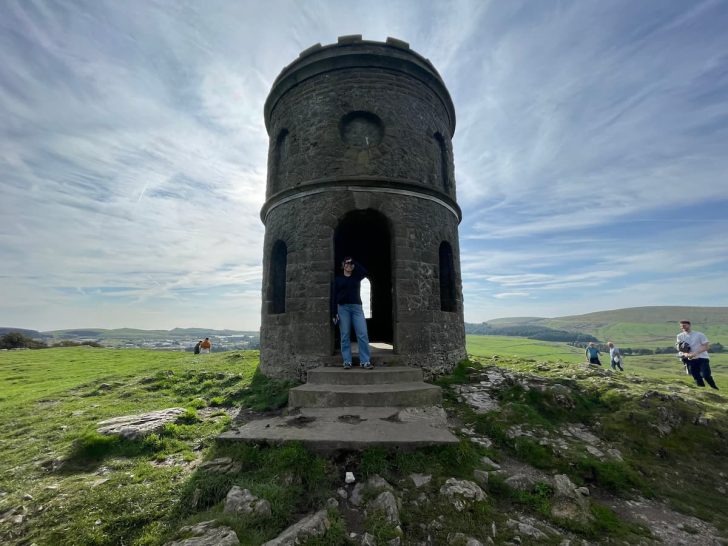Imagine standing atop the majestic Grin Low hill, gazing out over the encompassing landscape from Solomon’s Temple.
With whispers of the past lingering in the air, this Victorian folly tells tales of Bronze Age settlers, limestone industries, and Victorian philanthropy, while presenting a panoramic spectacle of Buxton and the stunning Peak District National Park.
Join us, as we traverse through, uncovering the mysteries and monumental significance encapsulated by Solomon’s Temple in Derbyshire’s, High Peak.
History & Prominence of Solomon’s Temple
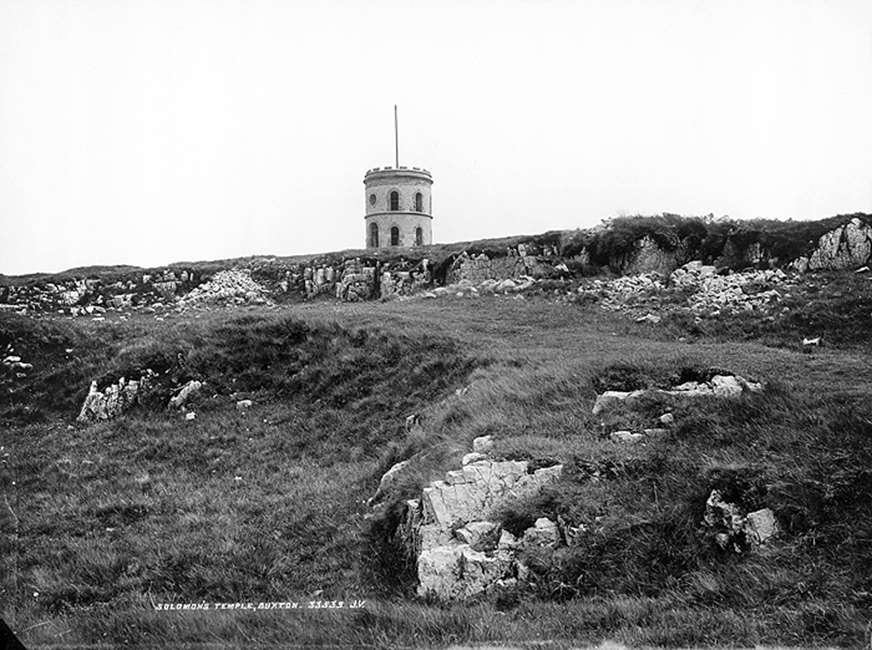
Perched atop the magnificent Grin Low hill, Solomon’s Temple, also renowned as Grin Low Tower, introduces visitors to a panoramic spectacle of Buxton and the enveloping Peak District.
This Victorian folly embeds itself into the picturesque landscape, yet houses mysteries and tales from long gone by.
Pre-Victorian Echoes: Barrows, Burials, and Limestone
Much before the tower graced the hill, Grin Low was a nexus of human activity.
It hosts a Bronze Age barrow, revealing a window into ancient practices and beliefs around life and death. Excavations in 1894 by Micah Salt unveiled skeletons, artefacts, weapons, and pottery, linking us to the area’s prehistoric inhabitants and their burial and cremation rites.
Additionally, Grin Low bore witness to a burgeoning limestone industry, initiated in the 17th century and burgeoning through the Industrial Revolution, weaving it into the technological and economic tapestry of the era.
The Building of the Tower: A Confluence of Philanthropy and Aesthetics
The first iteration of Solomon’s Temple emerged in the 19th century, attributed to Solomon Mycock, an innkeeper, local farmer and landowner.
It was not merely a whimsical structure but a beacon of philanthropy, envisioned to provide employment during trying times.
Although it eventually crumbled into ruin, the spirit and fascination with the tower lingered on, giving impetus to its revival in 1896, thanks to public subscription and the kindness of the 8th Duke of Devonshire.
Architectural and Social Pillar: The Reconstructed Solomon’s Temple
A symbol of both historical reverence and community spirit, the reconstructed Solomon’s Temple, designed by architects W.R. Bryden and G.E. Garlick, was actualized through collective efforts and contributions from local denizens and the Duke of Devonshire.
It stands not just as a mere architectural site but also as a testament to the communal and philanthropic spirit of the people of Buxton spa town in the late Victorian era.
A Window to Panoramic Vistas and Historical Depth
Solomon’s Temple, devoid of any interior extravagance, entices visitors with a 360-degree view from its open top, a visual feast of Buxton and the encompassing landscape as far as the highest mountain in the peak district (Kinder Scout) and further round to Mam tor in the Castleton, Hope Valley area on a clear day.
It invites contemplation on the multitude of Bronze Age settlers to Victorian philanthropists
Preservation: Vandalism and Restoration
Despite its grandeur and historical significance, the Temple was not immune to neglect and vandalism.
The latter half of the 20th century saw restoration endeavours, notably led by the Buxton Civic Association and comedian Tim Brooke-Taylor in 1987, ensuring that the structure continues to enamour visitors while standing as a poignant reminder of Buxton’s rich historical and cultural heritage.
In essence, Solomon’s Temple, while rooted in the layered history of Buxton, continues to stand tall as a symbol of community spirit, historical reverence, and architectural prowess, enchanting every visitor with its panoramic vistas and whispering tales of epochs gone by.
If you wish to learn more about the area accent past, I’d suggest visiting the Buxton Museum.
Solomon’s Temple Walk
The summit of Grin Low, where Solomon’s Temple sits, features an iconic walk from Buxton. Visitors have two options: embark on a longer walk from the centre of Buxton or opt for a shorter route from the car park at Poole’s Cavern Visitor Centre.
Download file for GPSThe walk begins in Buxton town and leads through the Pavilion Gardens, passing by the lake, and progresses up the road towards Poole’s Cavern. From there, you’ll gently ascend through the forest until you reach the plateau of Buxton Country Park, where Solomon’s Temple resides. Subsequently, descend via the path below, leading back to the original footpath, enabling you to retrace your steps.
Solomon’s Temple Walk – Step By Step – 5km (3.1mi) ~ 1-2 hrs
If you’re starting from Poole’s Cavern visitor centre, just jump to step 4
1.At Pavilion Gardens Car Park, stroll along the lake, which is part of the River Wye, exiting at the far end.
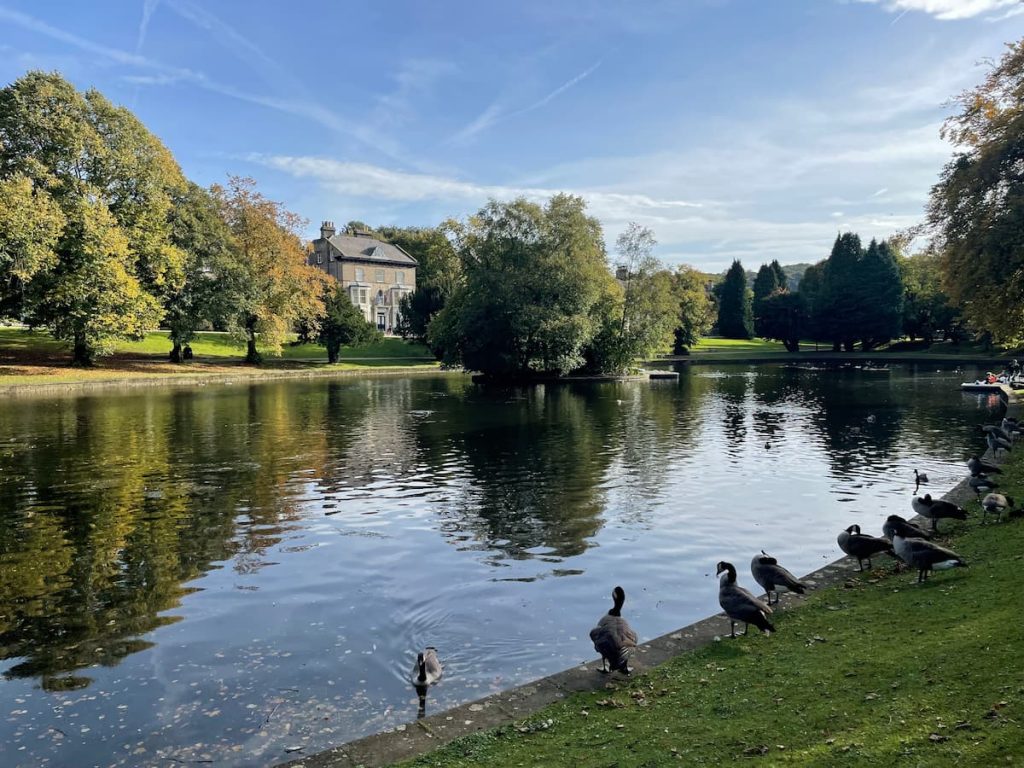
2. Cross over the road and ascend Temple Road, following it uphill.

3. You’ll eventually reach the entrance to Poole’s Cavern car park.

4. At the distant end of the car park, you’ll notice a staircase. Ascend it, and upon reaching the top, turn left.

5. Continue uphill as the path meanders through the forest. Be sure to observe the wooden sculptures along the way.
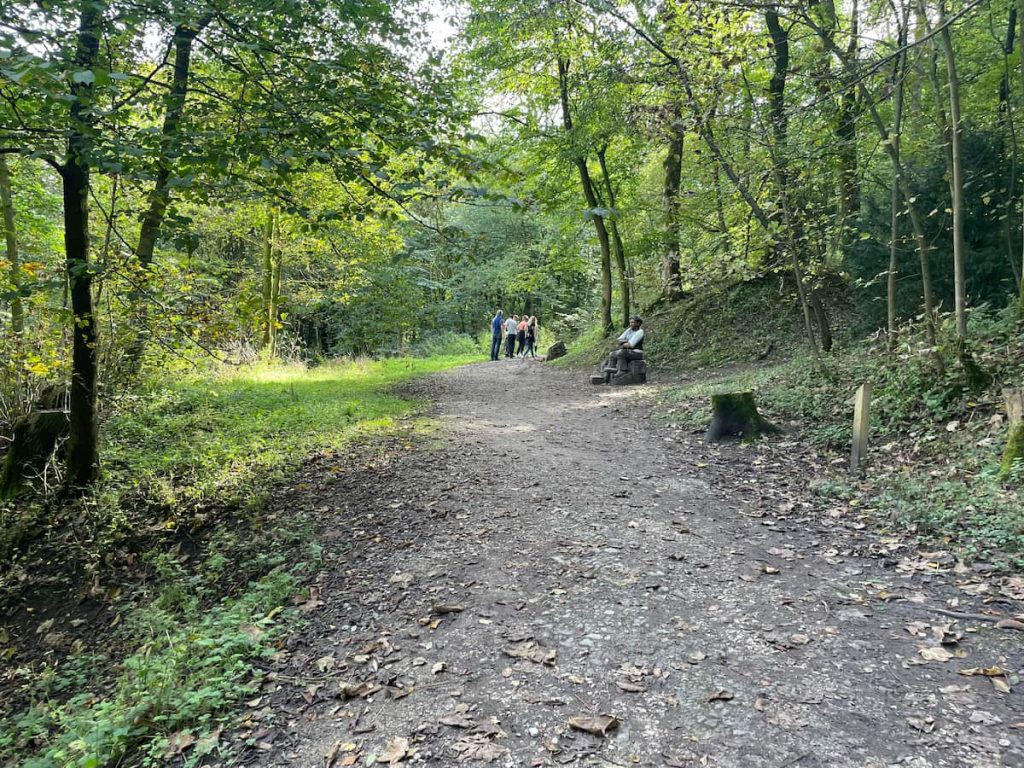
6. You’ll ultimately emerge from the forest, where the path leads through a gap in the wall.

7. Once on the other side of the wall, navigate towards the highest point where the temple resides. Traverse around the earth mounds until you reach the summit! At the top, make sure you climb the short staircase to absorb the view from atop the tower!
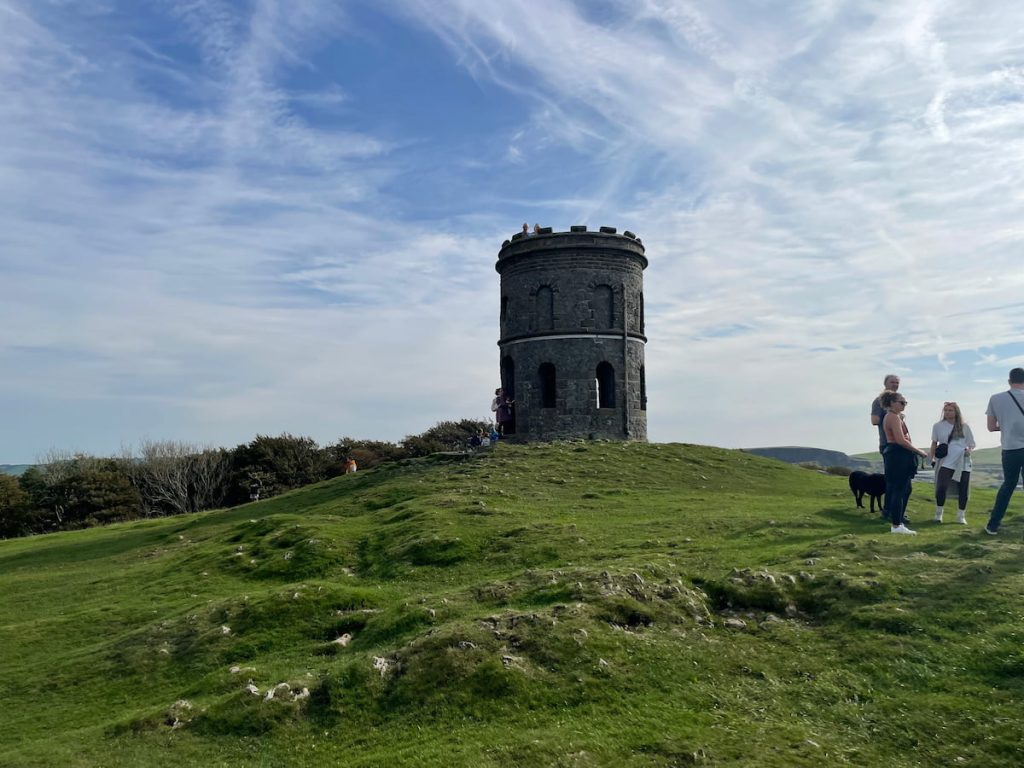
8. After admiring the view, head north downhill and through the gap in the wall.

9. A short way down the hill, take the path on the left through the gate that leads back into the wooded area.

10. Follow along the footpath until you rejoin the original path and retrace your steps to the car park or back into Buxton town.
Solomon’s Temple Parking
A variety of parking options are available for those visiting Solomon’s Temple. You may choose to park in the centre of Buxton, or for a shorter walk, opt for parking at Poole’s Cavern Visitor Centre or in the nearby area before proceeding on foot.
Alternatively, Grin Low Car Park & Caravan Park offers a potentially shorter and quicker route, though it was not visited at the time of writing.
Pavilion Gardens Car Park (Longer Walk from Town)
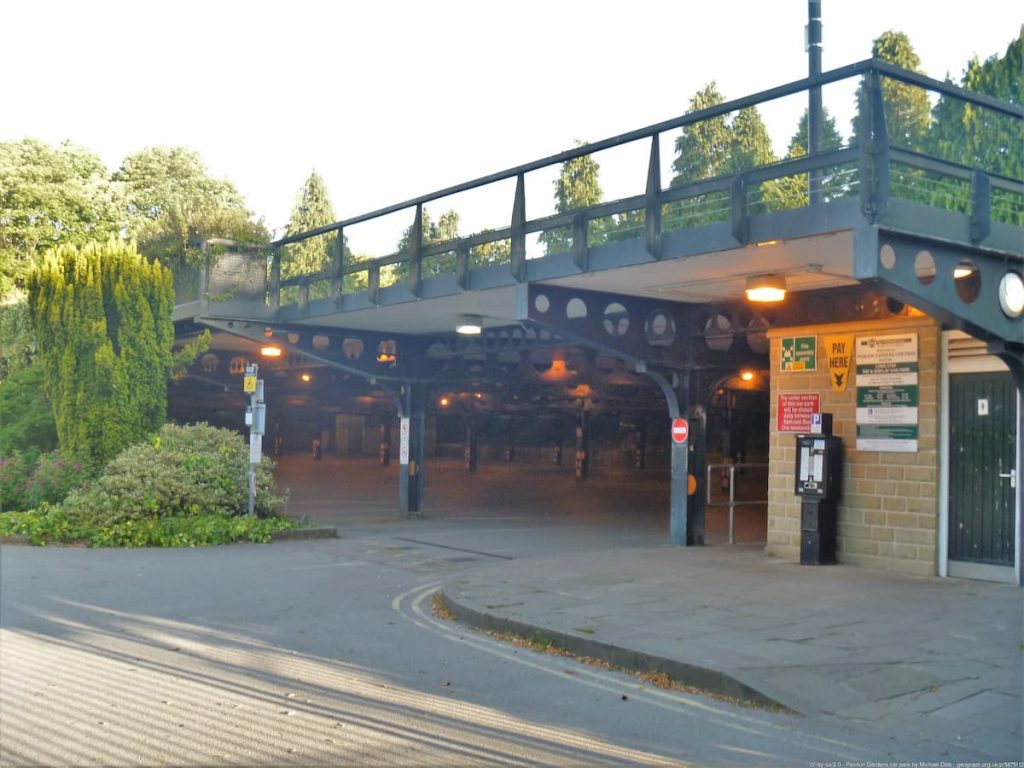
Address: St John’s Rd, Buxton SK17 9AR
If you’re starting your journey from Buxton or are in pursuit of a lengthier walk, parking at the Pavilion Gardens could be an advantageous option, affording you ample opportunity to explore the various attractions within Buxton.
Pricing:
- 0-1 hour: £1.60
- 1-2 hours: £2.20
- 2-4 hours: £3.60
- Over 4 hours (maximum 10 hours): £5.40
Poole’s Cavern Visitor & Surrounding Area (Shorter Walk)

Address: Pool’s Cavern, Green Ln, Buxton SK17 9DH
Poole’s Cavern serves as an excellent starting point for your walk, especially if you’re travelling from outside Buxton and prefer a shorter stroll. The visitor centre also features a quaint cafe and on-site facilities for your convenience.
The parking charges are as follows:
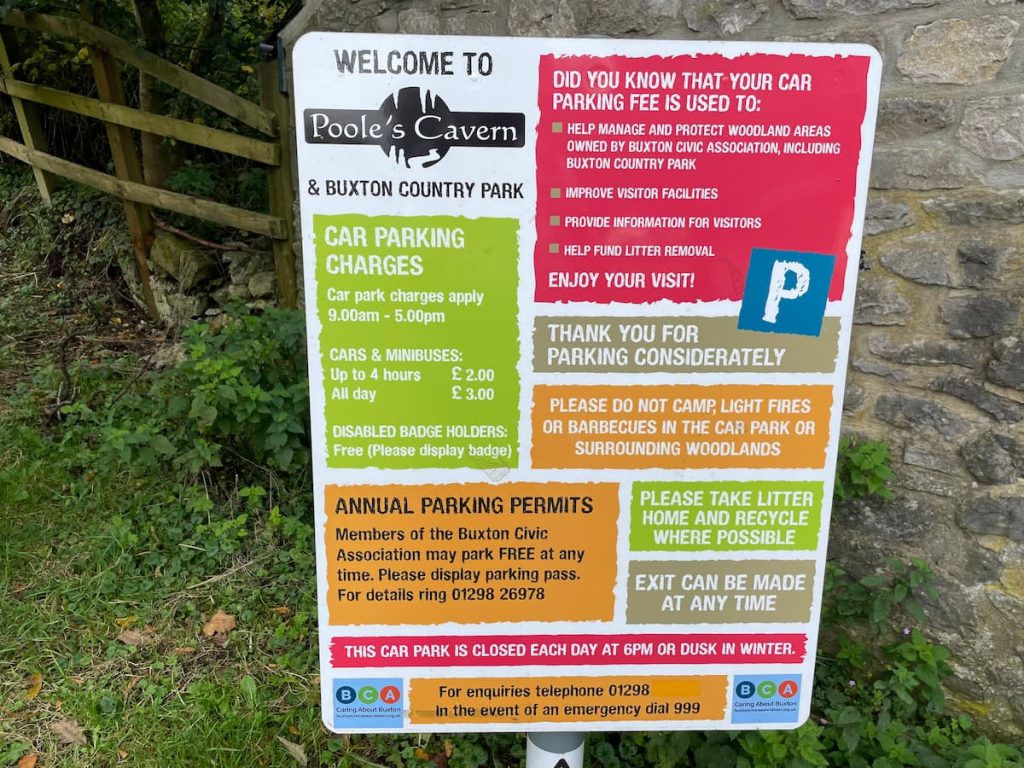
You can also park on the surrounding residential streets free of charge. However, ensure you are not blocking any driveways or roads, respecting access for local residents.
Solomon’s Temple FAQs
How high is Solomon’s Temple in Buxton?
Solomon’s Temple, located in Buxton, sits at an elevation of 433 meters (1419 feet) above sea level. The tower itself if 6 meters (20 feet) tall.
How old is Solomon’s Temple in Buxton?
The original Solomon’s Temple in Buxton was built in 1896 by Solomon Mycock and subsequently restored in 1988.
What was Solomon’s Temple in Buxton used for?
Initially, Solomon’s Temple did not serve an official or utilitarian purpose.
Solomon Mycock, a local landowner, commissioned its construction primarily to provide employment for the local population. Over time, it has evolved into a tourist attraction for both Victorian-era and contemporary visitors to Buxton, also offering a sheltering spot during the often wet weather in the Peak District.
Is Solomon’s Temple accessible via public transport?
While buses don’t frequently service the immediate area around Solomon’s Temple, Buxton itself enjoys robust transport links to nearby areas and major cities like Manchester, largely due to its railway station.
Upon arrival at the station, it typically takes about a 30-minute walk to reach the summit of Grin Low Country Park and Solomon’s Temple.

